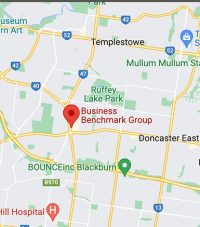Not everything goes to plan. But that shouldn’t hold you back. Years ago, we were trying to find new ways to reach more business owners and decided to stage an event that would inspire, motivate and unite.
After much planning and preparation, we launched “The Small Business Big Day Out”. The aim was to build strategic alliances and, most importantly, provide value to business owners across all levels of growth. As the event day drew closer, we sold tickets to excited business owners and were gearing up to host one of our most significant events yet.
Unfortunately, we cancelled the event because we were disappointed, but the decision was based on logic rather than emotion. We had a Plan B ready to go. We confirmed our regret, arranged refunds, and learned from this experience.
We took a risk, and it didn’t pay off. That’s the world of business.
Many business owners are not taking risks for fear of a poor or imperfect outcome. But that thinking holds you back.
The cost of taking risks opportunity vs. the cost of growth
There are costs involved in taking risks in your business to the next level. How you approach those costs will be pivotal to whether your business goes to the next phase or languishes where it is now. There are two mindsets you can have when you look at costs: the cost of growth and the cost of opportunity. Let me explain.
Being in ‘cost of growth mode’ means having a short-term outlook and seeing everything purely in terms of dollars spent. You have an expense mindset. You look at each decision and say, “Geez, I need to do that. However, I’m not sure I can afford it right now,” without looking further into the future and recognising the long-term benefits of spending versus investing that money.

When you are in cost of growth mode, you are holding yourself back and limiting your horizons. Your focus is on today’s declining bank account, not tomorrow’s potential profits.

When you look at decisions as strategic steps to realize the new opportunity, not simply costs, your whole horizon will expand. You are clear about where you are going and moving forward within your target market. You are reaching out and grabbing the opportunity rather than letting your fears hold you back. You are strategically planning and gaining clarity and confidence. You have an investment mindset.
How these mindsets work in reality
For example, let’s say you run a retail outlet and are considering expanding to a second location.
Cost of growth mode – you’ll do all your sums and decide that maybe it doesn’t quite add up. Perhaps you’re not ready and don’t have the financial resources to pull it off right now. You might want next year, but not now. Or perhaps you think your current little store is where you belong.

Cost of opportunity mode – You move forward with clarity and confidence and don’t see expanding to a second store or location as a cost but as an opportunity. You’ll understand what the new site will bring – it will make everything bigger and better and launch the next phase of your business. Your buying or marketing decisions will not change, but the leverage of the outcome will be growth.

Perhaps the decision will hurt you in the short term, whether it’s your finances or your operations. But sometimes, you must go two steps backwards to go four steps forward. If you’re in cost of growth mode, you’ll see the two steps back, but if you’re in charge of opportunity mode, you’ll also see the four steps forward.
It is how you grow a business. It’s not a license to throw money at something every chance, but it’s about being bold and backing yourself if you’ve put in the hard graft.
Focus on the cost of opportunity, not growth, and be prepared to take a short-term hit for a long-term gain. But remember, with every Plan A, you must have a Plan B ready to go at the drop of a hat.









